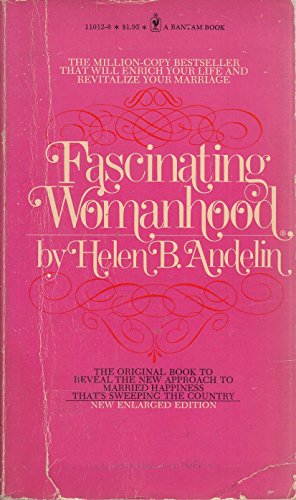

Currently, she is an adjunct instructor of American history at Eastern Washington University and affiliated with the American Historical Association Organization of American Historians, Western Association of Women Historians, American Academy of Religion, and the Mormon History Association. Neuffer’s qualifications for research in this area of expertise include a PhD in American history from Washington State University. In the end, Neuffer shows Andelin struggling between her loyalty to FW and her loyalty to the Church, unable to fully overcome the grudge against Church leaders for failing to endorse her program (121–24). She had wanted those leaders to endorse FW for churchwide use (120), but the Church navigated away from her movement (103). McKay in the book, in the 1990s she called certain LDS leaders “uninspired men in business suits” (122). Though Andelin felt it was her mission to write FW (41) and even quoted President David O. Readers will see Andelin serving as both a single and senior missionary but also calling General Relief Society President Barbara B. Neuffer’s research of Andelin’s complex and changing relationship with The Church of Jesus Christ of Latter-day Saints also contributes to the body of scholarship. Readers come away with a profound understanding of the often complex, sometimes ambivalent, generally loving, and mutually supportive relationship that existed between Helen and Aubrey Andelin throughout their fifty-seven-year marriage and business partnership. The triumphs and tragedies of Andelin’s life are well documented. Behind-the-scenes disclosures, such as Andelin’s surgical facelift at age forty-seven, bring new light to how she personally engaged her convictions (75). Neuffer puts flesh on her subject as she describes “Andelin’s personal magnetism, over-the-top femininity and prim self-righteousness” in vivid detail (117). Mostly she just refused to bend to convention” (116–17).

While she was often booed by live audiences, it was nearly impossible for her detractors to wage a war of words. . . For instance, Neuffer explains that one of the reasons Andelin was so appealing amid hostile and vocal criticism (89) was “that she refused to play by the rule of intellectual arguments. . . Neuffer introduces her readers to another side of the women’s movement in her juxtaposition of Andelin’s Fascinating Womanhood and Betty Friedan’s The Feminine Mystique.Īnother outstanding contribution of this biography is that it gives, with thoughtful empathy, a clear lens to Andelin’s motivation Neuffer’s analysis provides remarkable insight into Andelin’s personality and character. This important scholarship gives us that understanding and shows that “ FW represented a significant aspect of a growing political and social backlash to the era’s turbulence, which many feared was eroding traditional institutions and values” (2). As Neuffer explains, “In order to fully understand the feminist movement, one must also understand the fascinating womanhood movement” (x). Neuffer’s research brings us an understanding of Andelin’s “wide appeal as both a religious and political leader,” which augmented “the fast-expanding discussion about women’s strategies to cope with-and shape-political and social change” (3). This volume makes the study of the “femininity women’s movement” a part of a growing body of scholarship that expands the definition of the women’s movement in politics and religion during the 1960s and 1970s (3). One contribution of Neuffer’s work is to show that Andelin’s FW movement was an alternative to the ideas forwarded by the women’s liberation movement (159). Neuffer’s biography gives an unprecedented view of a neglected topic in twentieth-century women’s history, gender studies, women’s studies, and Mormon studies. The movement sought to demarcate feminine roles and gifts rather than close the gender gap a woman’s “essential nature” (39) could bring love and order to a marriage.

While growing up, I heard about Fascinating Womanhood ( FW) but did not realize the scope of the movement’s influence on millions of women in the twentieth century. Though she is sympathetic to Andelin, Neuffer’s portrayal is accurate, impartial, and unbiased. Neuffer reached this goal, for, having finished the book, I am still unsure if Neuffer is for or against Andelin’s philosophy. Helen Andelin and the movement she founded, within the larger historical context of women’s reform efforts” (4).

In writing Helen Andelin and the Fascinating Womanhood Movement, it was Julie Debra Neuffer’s hope that her study would “provide a scholarly and evenhanded look at the philosophy and motivations of.


 0 kommentar(er)
0 kommentar(er)
